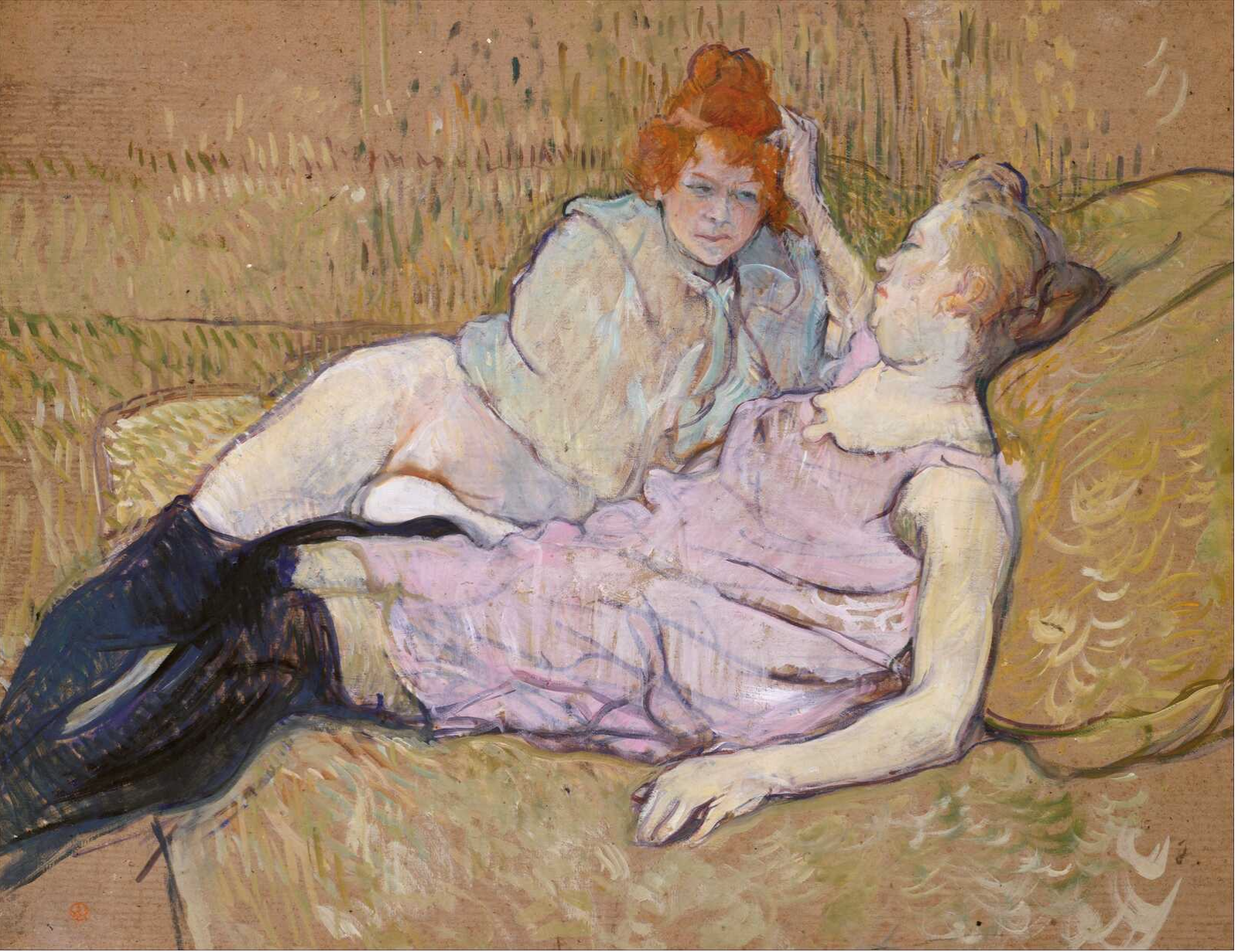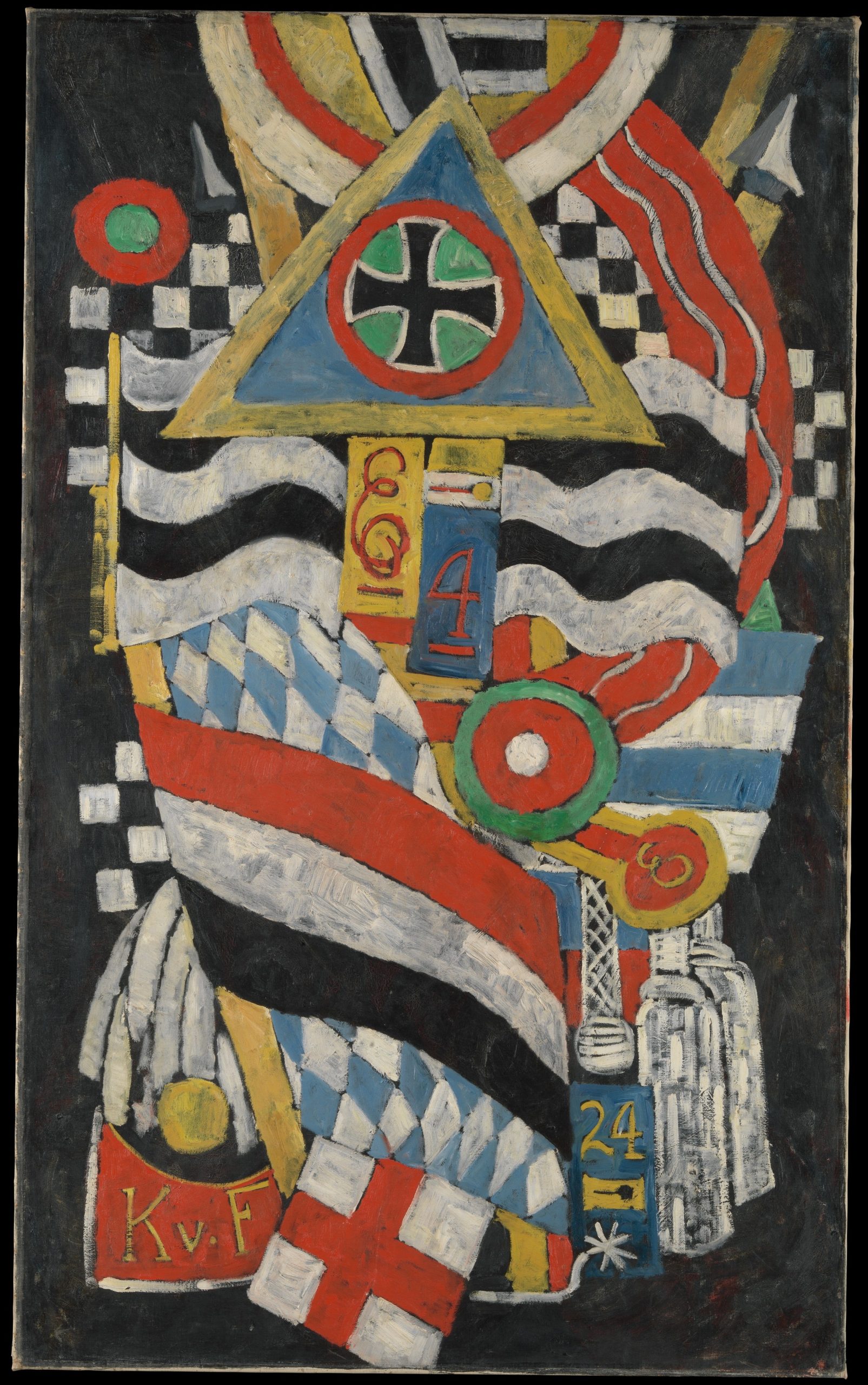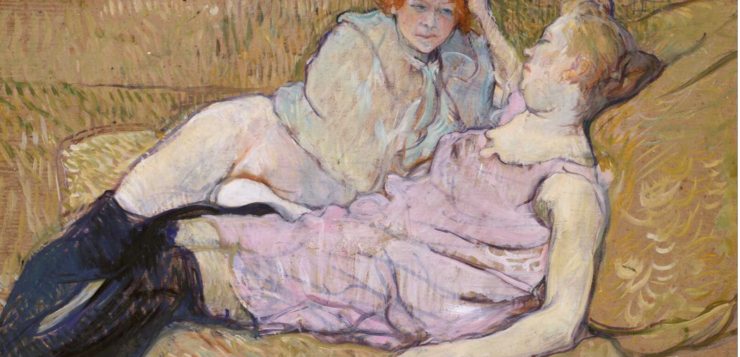YOU COULD go through almost any one of the world’s great art museums, reading the labels of all their thousands of artworks, without seeing a single reference to anything LGBT. There would be no mentions of artists’ or subjects’ sexual identities or the LGBT themes in artworks. I don’t want to portray museums as singularly homophobic; you would find very little information about other contextual issues or minorities either. Art museums mostly want to tell you only about art—about artistic techniques and stylistic progressions—not about social history or “human interest.” Just as one example, in a U.S. museum there is a Golden Age Dutch scene of a prostitute cheating a man at cards in a brothel. How does the museum identify the painting? “Elegant Figures Playing Cards in an Interior.” What kind of interior? That’s for them to know and you to find out.
So it’s not just LGBT people that are blocked from making a human connection to the art in the museums’ collections; it’s everyone. But the problem is that much more acute for people who are already left out of their culture’s historical narrative much of the time, and thus unsure of their place in history. What’s more, this policy of omission is especially glaring in the case at hand, because museums are in fact full of artworks with various LGBT connections.
To make this point, I am going to talk about three artworks in one museum, the Metropolitan Museum of Art in New York City. They are only three of the many artworks in the museum with LGBT elements, but they are good examples for a couple of reasons. First, they cover the LGBT waterfront: One is by a gay male artist and about his lover and/or love; one, though by a straight male artist, is on a lesbian theme; and one centers on a person with a complex gender identity. In addition, they’re all artworks with relatively subtle LGBT themes such that a naïve viewer would be unlikely to notice them.
A 17th-Century Drag Artist?
There is a painting by the Dutch master Frans Hals with the rather misleading title Merrymakers at Shrovetide (1616–17). Shrovetide? Well, if you notice the orange beads around the neck and wrists of the “maiden” at its center you can easily tell what holiday this group of merrymakers is celebrating. Today we call it Mardi Gras. Just think how much more approachable the painting would be if it were titled “Mardi Gras Party.”

So what do people do at Mardi Gras parties? First, of course, they drink, and there does seem to be a lot of that going on here. There’s a large beer stein in the middle of the foreground. The “maiden” is flushed, and the man on her right has a very red face. And, of course, people wear costumes on Mardi Gras. Those in the background appear to be wearing masks, and the two men leaning on the “maiden” are not wearing typical Golden Age Dutch clothing (think of the Pilgrims) but costumes of some kind. The man to the left of the “maiden” is wearing something like the costume of a Jack on a playing card, i.e. a jester.
And what about the “maiden”? “She” is dressed in an elaborately embroidered silk gown with a very grand lace collar and cuffs. But, of course, “she” is not really a maiden at all. First, “she” does not have the elegant hairdo or make-up that would fit with the gown, and those fingers are particularly inelegant. But “she” also has an Adam’s apple and is therefore clearly a male.
In fact, since I started this description by putting “maiden” in quotation marks, you may have figured out by now that this is a boy in drag. Indeed the Met has recently updated its label to point out the possibility. In retrospect, I’m surprised that only a few years ago, when it was just a painting in a room full of Dutch paintings, I still happened to notice this anomaly.
Quite recently I heard a lecture in which a very good scholar referred to him as a maiden. In short, this gender gambit is easier to miss than you might think, especially because it is so unusual in the context of Dutch art from this period.
The painting emphasizes the sexy side of drag. There’s an array of phallic objects in the painting, from the deflated bagpipe in the foreground to the sausages hanging over one of the standing men’s shoulders. Meanwhile the other man seems to be making an obscene gesture that’s directed toward the boy—not a common sight in late Renaissance art! However, I think there’s a nonsexual explanation for his costume (aside from Mardi Gras). In the 17th century, boy actors played women’s roles in the theater, and I wonder if he could be an actor. The gesture he’s making is one of giving an order, and I think it possible that he’s wearing the costume of a queen, perhaps a role he has played.
So it might not be exactly accurate to call him a drag artist. Boy actors who played women’s roles are an example of a gender category that existed in the past but has no modern equivalent. Museums are full of hidden examples of sex and gender diversity that they keep quiet about or perhaps haven’t even recognized in their collections.
After Hours in the Belle Époque
The great French artist Henri de Toulouse-Lautrec did a painting with a lesbian theme: The Sofa (1894–96). The first thing most viewers see when they look at the painting is a scene of exhausted women talking (or communing?) on a sofa. Judging by the black stockings that were a key part of prostitutes’ attire in Belle Époque Paris, they are two sex workers at the end of a hard day’s—or night’s—work.

It is well known that sex workers are an important theme in Toulouse-Lautrec’s work, as are Paris’ girly shows, especially at the Moulin Rouge—in the same way that horse races, ballet dancers, and bathing women (again, possibly sex workers) are in Degas’ art. Bordellos, girly shows, racecourses, the opera house—these were all noteworthy features of Belle Époque Paris. Portraying it all was part of the project of these artists (the Impressionists and Post-Impressionists, the hipsters of their day), that of capturing the life of Paris, the new megalopolis. But this project sometimes had a polemical side as well, as in Toulouse-Lautrec’s painting. Nineteenth-century hipsters, like rebels at all times, wanted to undermine the idealized or sentimentalized version of reality promoted by bourgeois culture and by less edgy artists, in their case by the so-called “academic” artists at the official Salon.
In today’s museums, we don’t see much art by academic artists, because tastes shifted after World War I. The rebels of the late 19th century came to be viewed as the great masters, while the academics were consigned to history’s dustbin. But the Met is something of an exception here. It has a good collection of academic work on display even if it’s ignored by the throngs. And I can use one of the Met’s paintings to highlight Toulouse-Lautrec’s message. This is Alexandre Cabanel’s Birth of Venus (1863/1875). Shown at the Salon of 1863, known as the “Salon of the Venuses,” Cabanel’s painting was a huge success. It was purchased by the Emperor Napoleon III for the Tuileries Palace, and Cabanel was named a professor at the École des Beaux Arts in the same year. The original is in the Musée d’Orsay; the Met’s is a version commissioned twelve years later by an American department store magnate—showing that this kind of nude was popular on both sides of the Atlantic at the time. But place it (or a number of similar nudes) next to Toulouse-Lautrec’s painting, and the contrast between the two visions of a reclining, sexy lady—or of sex itself—is apparent. You immediately get the point: sex is not a softly-lit, perfectly airbrushed, coy experience. Sex (especially in the Belle Époque, before the 20th-century trend of love marriage) has a lot more to do with two tired sex workers in a brothel, with their crumpled shifts, falling black stockings, and eyes half-closed (with fatigue, not pleasure!).
Just as the viewer immediately grasps the context of this scene, the eye is drawn to the conversation between the two women. Attention is focused there by simple means: the shock of red hair on the head of one of the women draws our attention upward, and her smoky blue eye-shadow directs it to the glances between the two—and to the combination of exhaustion, cynicism, and tenderness in their expressions. In fact, the most extraordinary thing about the painting is its portrayal of intimacy—not a common theme in painting. Toulouse-Lautrec has also subtly emphasized the intimacy between the two women by almost merging their bodies into one. He uses a hard pencil line to outline the double creature that they form, but only a soft, blurry line between them, and the position in which he has placed them leaves only two arms and two or three (it’s hard to tell) legs on view.
The fact that they are also lovers is less noticeable, but the line of red pubic hair between the back woman’s thighs makes it clear that she is nude from the waist down, and it would be unusual to snuggle with anyone other than one’s lover with that kind of exposure. No doubt the women’s lesbianism, while a recurring theme in Toulouse-Lautrec’s work, would have added to the painting’s shock value. Not only does he reject the Salon painter’s hazy, prettified view of sex, but he depicts a pair of exhausted, crumpled sex workers who would not have been attracted to the artist, nor to the Salon’s male viewers, nor to any men at all.
Mourning a Man in Uniform
Marsden Hartley was an important Modernist painter, but his fame has not endured like that of contemporaries such as Picasso and Matisse. This may in part be because Hartley was not good at branding: like Picasso, he followed a number of different trends during his life, but unlike Picasso, Hartley is not always recognizable as himself. He was best known, and most identifiable, when he moved to his native Maine in the 1930s and, in the spirit of American regionalism that was fashionable then, became known as the “painter of Maine.” In particular, he did many views of Mount Katahdin—though he also did jokily homoerotic scenes of lumberjacks and lobstermen.

A painting titled Portrait of a German Officer (1914), however, dates from earlier in Hartley’s career, when he was living in Berlin and doing cubism. It’s a collage of German nationalist and military symbols, such as the German flag, the Bavarian flag, and the iron cross. When World War I forced him to return to the U.S. and the painting was shown in New York, discussion focused on Hartley’s attitude toward German militarism. Was he criticizing it? People generally felt he was not doing so to a sufficient degree, and in this they were probably right. Hartley was very taken with German uniforms.
But certain details in the painting might have alerted the viewer to other possibilities. What do the initials “KvF” in the lower left mean? Why the number 24 at lower right? And why is there a chessboard behind the triangle with the iron cross? The fact is that the painting is not about German militarism in general but about one particular German officer, and the story is a sad one. In Berlin, Hartley was in love with a young, aristocratic fighter pilot who died in one of the first air battles of World War I, and the painting is a memorial to him. His name was Karl von Freyburg—hence KvF—and he died at 24. He received the iron cross posthumously, and he loved to play chess.
I think it is instructive to compare and contrast this painting with the Greek kouros statue that’s only a few hundred yards away in the Met. Kouros statues are somewhat mysterious, but we know that at least some of them were used as grave markers for dead young men, or dead men memorialized as youths at any rate. One at the National Archaeological Museum in Athens was preserved with its inscription, so we know it commemorates a fallen soldier. When Archaic Greeks, in any case, wanted to memorialize a dead man, they presented his naked body to the mourners. But when your fighter pilot boyfriend dies in modern warfare, you can’t exactly present him as a charred corpse, so Hartley chose this approach. It has often been suggested that Portrait of a German Officer to some extent mirrors the shape of a human body, with the circle and triangle at the top representing the head and neck, and with a suggestively phallic red cross in the pelvic area. I think that it resembles more closely what a modern mourner sees of his beloved: a coffin wrapped in flags.
To be sure, a viewer in 1917 could never have seen any of these meanings, because you need to know some of what to look for before you can notice the rest, and they didn’t have even an initial clue. We know much more today that people did back then, but will museums use this awareness to spring open the closet door?






